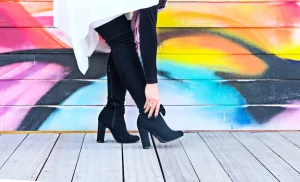How to Create a Minimalist Wardrobe: Embrace Simplicity and Style


How to Create a Minimalist Wardrobe: Embrace Simplicity and Style


Introduction
A minimalist wardrobe is a curated collection of essential and versatile clothing pieces that bring simplicity, style, and functionality to your daily life. By adopting a minimalist approach to your wardrobe, you can eliminate clutter, reduce decision fatigue, and achieve a more sustainable and intentional fashion lifestyle. In this comprehensive guide, we will explore the step-by-step process of creating a minimalist wardrobe, along with valuable tips and tricks to help you build a wardrobe that truly reflects your personal style and values.
Benefits of a Minimalist Wardrobe
1. Simplified Decision-Making
A minimalist wardrobe streamlines your daily choices by offering a limited but versatile selection of outfits, making it easier to get dressed each morning.
2. More Space and Organization
Reducing the number of clothing items in your wardrobe frees up valuable space and allows for better organization.
3. Cost-Effectiveness
Investing in high-quality, timeless pieces means you spend less money on fast-fashion trends that quickly go out of style.
4. Environmentally Friendly
A smaller wardrobe contributes to less textile waste, promoting a more sustainable approach to fashion.
5. Enhanced Personal Style
With fewer clothing options, you can focus on cultivating a signature style that truly represents your personality and values.
Step-by-Step Guide to Building a Minimalist Wardrobe
Step 1: Assess Your Current Wardrobe
Begin by taking a thorough inventory of your existing clothes. Divide them into three categories: essentials, occasional wear, and items you rarely wear or no longer need. Assess which pieces align with your style and which ones can be donated, sold, or repurposed.
Step 2: Define Your Style
Consider the styles and colors that resonate with you the most. Identify your go-to outfits and the clothing items you feel most comfortable and confident in. Pay attention to the patterns, fabrics, and silhouettes you prefer.
Step 3: Identify Your Core Pieces
Determine the essential clothing pieces that form the foundation of your wardrobe. These may include classic items such as a white button-down shirt, a pair of well-fitting jeans, a tailored blazer, a little black dress, and comfortable versatile shoes.
Step 4: Build on Versatility
Select clothing items that can be mixed and matched effortlessly to create a wide range of outfits. Opt for neutral colors like black, white, gray, and navy, as they are easy to combine and can be dressed up or down with accessories.
Step 5: Invest in Quality
Prioritize quality over quantity. Invest in well-made garments that will stand the test of time and retain their shape and color after repeated wear. Look for sustainable and ethically produced clothing brands.
Step 6: Donate or Sell Unnecessary Items
Part with clothing pieces that no longer serve you or align with your style. Donate them to a charitable organization, sell them online, or consider hosting a clothing swap event with friends to exchange unwanted items.
Step 7: Curate Seasonal Capsules
Create seasonal capsules by selecting a limited number of clothing pieces that you’ll wear for a specific season. Rotate these capsules throughout the year to keep your wardrobe fresh and versatile. Store off-season items neatly to maximize space.
Step 8: Embrace Mindful Shopping
When adding new pieces to your minimalist wardrobe, practice mindful shopping. Ask yourself if the item complements your style, fits perfectly, and serves a purpose in your wardrobe. Avoid impulse purchases and take the time to consider whether the new piece truly adds value to your collection.
Step 9: Master the Art of Layering
Layering is essential for creating diverse looks with a limited number of clothing items. Invest in lightweight sweaters, cardigans, and scarves that can be paired with various outfits to add warmth and style.
Step 10: Cultivate a Capsule Shoe Collection
Similar to your clothing capsules, curate a small collection of versatile shoes that can be paired with different outfits. Invest in comfortable, well-made footwear that suits both casual and more formal occasions.
Step 11: Organize Your Wardrobe Strategically
Arrange your clothing items by category (e.g., tops, bottoms, dresses) and then by color within each category. This organization system allows you to see all your options at a glance and makes getting ready a breeze.
Step 12: Maintain Your Minimalist Wardrobe
Regularly review your wardrobe and reevaluate its contents. Donate or sell any items that you haven’t worn in a long time or that no longer fit your style. Avoid unnecessary shopping and focus on maintaining a collection of clothing that truly represents you.
Tips for Maintaining a Minimalist Wardrobe
1. Quality over Quantity
Invest in durable, high-quality clothing items that will last longer and withstand frequent wear. Look for well-made fabrics and strong stitching.
2. One In, One Out
Adopt a “one in, one out” policy when purchasing new clothing. For every new item you add, remove an existing one to maintain a manageable wardrobe size.
3. Embrace Timeless Pieces
Choose classic and timeless pieces that won’t go out of style, allowing you to wear them for years to come.
4. Capsule Wardrobes
Consider creating capsule wardrobes for specific activities or travel. A capsule wardrobe consists of a few versatile items that can be mixed and matched to create various outfits.
5. Tailor Your Clothing
Tailor clothing items to ensure a perfect fit. Well-fitting clothes elevate your overall appearance and increase wearability.
6. Practice Regular Wardrobe Reviews
Periodically review your wardrobe to assess whether certain items are still serving you well or if it’s time to let them go.
7. Mindful Laundry Care
Follow care instructions to preserve the quality and longevity of your clothing. Avoid over-washing and use gentle detergents to maintain the fabric’s integrity.
8. Avoid Trend-Based Purchases
Avoid purchasing items solely because they are trendy. Instead, focus on timeless pieces that align with your personal style and can be worn for multiple seasons.
9. Explore Second-Hand Shopping
Consider thrift stores, consignment shops, and online platforms for second-hand clothing finds. You may discover unique pieces at a fraction of the original cost while promoting sustainability.
10. Accessorize Thoughtfully
Use accessories like scarves, belts, and jewelry to add variety and interest to your outfits without cluttering your wardrobe.
Conclusion
A minimalist wardrobe offers an array of benefits, from reducing decision fatigue to fostering a more sustainable and intentional fashion approach. By following the step-by-step guide and incorporating the provided tips, you can create a curated collection of timeless and versatile clothing pieces that reflect your personal style while promoting a more mindful and environmentally friendly lifestyle. Embrace simplicity and style with a minimalist wardrobe that brings joy and ease to your daily dressing routine.








